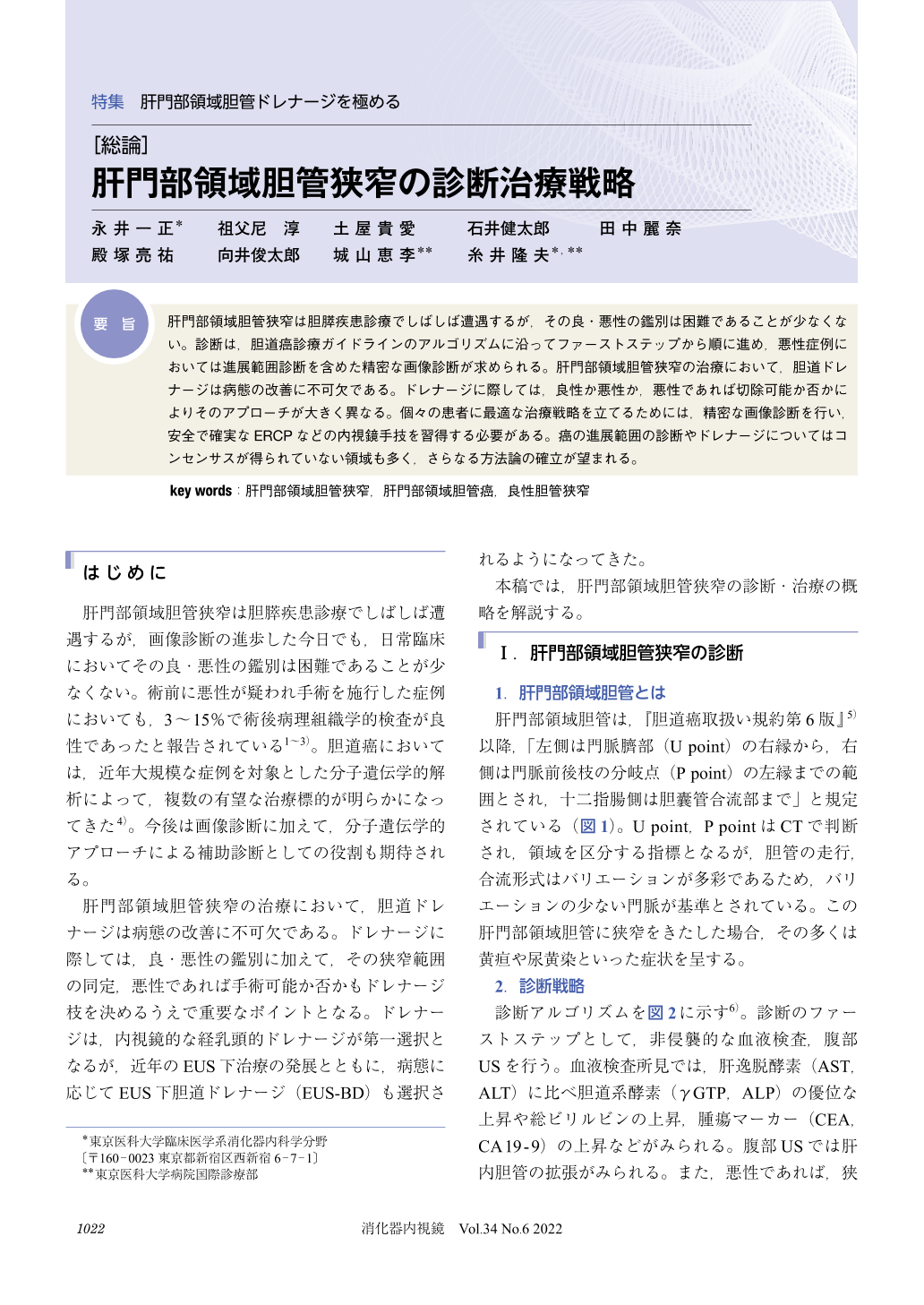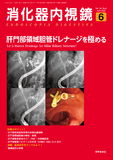Japanese
English
- 有料閲覧
- Abstract 文献概要
- 1ページ目 Look Inside
- 参考文献 Reference
要 旨
肝門部領域胆管狭窄は胆膵疾患診療でしばしば遭遇するが,その良・悪性の鑑別は困難であることが少なくない。診断は,胆道癌診療ガイドラインのアルゴリズムに沿ってファーストステップから順に進め,悪性症例においては進展範囲診断を含めた精密な画像診断が求められる。肝門部領域胆管狭窄の治療において,胆道ドレナージは病態の改善に不可欠である。ドレナージに際しては,良性か悪性か,悪性であれば切除可能か否かによりそのアプローチが大きく異なる。個々の患者に最適な治療戦略を立てるためには,精密な画像診断を行い,安全で確実なERCPなどの内視鏡手技を習得する必要がある。癌の進展範囲の診断やドレナージについてはコンセンサスが得られていない領域も多く,さらなる方法論の確立が望まれる。
Hilar biliary stricture is often encountered in daily practice. However, it is difficult to differentiate between benign and malignant lesion. A process of differential diagnosis is according to the algorithm of “Clinical practice guidelines for the management of biliary tract cancers”. Precise diagnosis of local extension is required for hilar cholangiocarcinoma from each of the imaging modality. In the treatment of hilar biliary stricture, biliary drainage is essential for improvement of the status. The approach of drainage varies depending on whether the stricture is benign or malignant. Moreover, in malignant cases, it depends largely on whether it is operable or not. In order to develop the optimal treatment strategy for each patient, it is necessary to perform precise diagnostic imaging and acquire safe and reliable ERCP techniques.

© tokyo-igakusha.co.jp. All right reserved.


